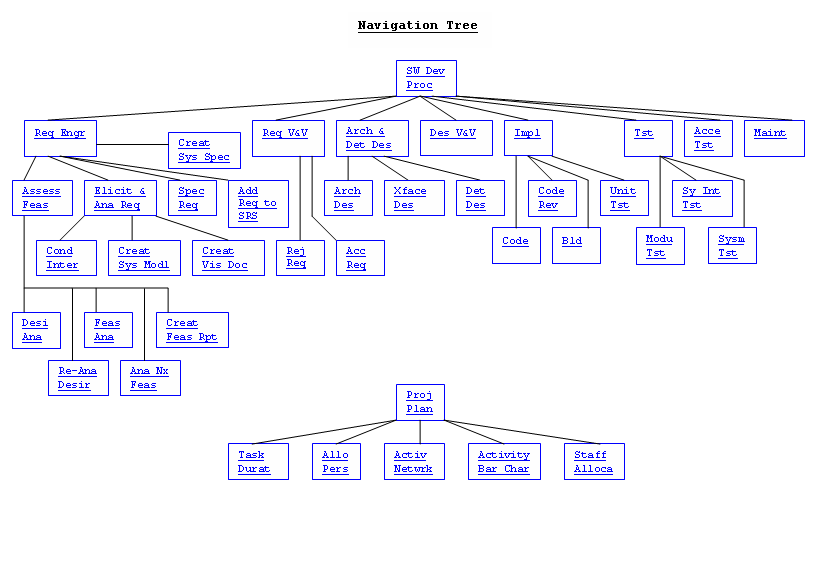| Box Text |
Expansion |
| Acc Req |
Accept
Requirement |
| Acce Tst |
Acceptance
Testing |
| Activ Netwrk |
Activity
Network and Milestone Description |
| Activity Bar Char |
Activity
Bar Chart |
| Add
Req to SRS |
Add
Requirement to SRS (System Requirements Specification) |
| Allo Pers |
Allocation
of Personnel to Tasks |
| Ana Nx Feas |
Analyze
Feasibility of Next Most Desired Option |
| Arch Des |
Architecture
Design |
| Arch & Det Des |
Architecture
Design and Detailed Design |
| Assess Feas
|
Assess Feasibility |
| Bld |
Build |
| Code |
Code |
| Code
Rev |
Code Review |
| Cond Inter |
Conduct
Interview(s) |
| Creat
Feas Rpt |
Create Feasibility
Report |
| Creat Sys Model |
Create
System Model |
| Creat Sys Spec |
Create
System Specification |
Creat Vis Doc
|
Create
Vision Document |
| Des
V&V |
Design
Verification and Validation |
Desi Ana
|
Desirability
Analysis |
| Det Des |
Detailed
Design |
| Elicit & Ana Req |
Elicit
and Analyze Requirements |
| Feas Ana |
Feasibility
Analysis |
| Impl |
Implementation |
| Maint |
Maintenance |
| Modu Tst |
Module Testing |
| Proj Plan |
Project Plan |
| Re-Ana
Desir |
Re-Analyze Desirability of Most
Desired Options |
| Rej Req |
Reject
Requirement |
| Req Engr |
Requirements
Engineering |
| Req V&V |
Requirements
Verification and Validation |
| Spec Req |
Specify
Requirements |
| Staff Alloca |
Staff
Allocation Versus Time |
| SW
Dev Proc |
Software Development
Process |
| Sy Int Tst |
Sub-System
Integration Testing |
| Sysm Tst |
System Testing |
| Task Durat |
Task
Durations and Dependencies |
| Tst |
Testing |
| Unit Tst |
Unit Testing |
| Xface
Des |
Interface Design |

